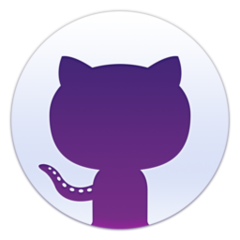|
|
Measure the distance between two points on the active schematic document |
||
|
|
Change the view of the board (or component) in 3D so that you are looking at the board from the back side |
||
|
|
Switch the display of the PCB workspace to 3D Layout Mode |
||
|
|
Redo |
||
|
|
Constrain the direction of movement to the horizontal or vertical axis depending on the initial direction of movement |
||
|
|
Align selected design objects by their left edges while maintaining adequate spacing in observance with applicable design rules |
||
|
|
Flip the object being placed/moved to the other side of the board |
||
|
|
Show keyboard shortcuts for current stage of an interactive command |
||
|
|
Cycle backward to the previous open tabbed document, making it the active document in the design workspace |
||
|
|
Toggle the display of all floating panels |
||
|
|
Refresh the active document when that document is a web-based document |
||
|
|
Switch to the next enabled layer |
||
|
|
When moving a component to cycle through component conflict resolution modes (Ignore Obstacles, Push Obstacles, Avoid Obstacles) |
||
| + |
(Drag and drop from Windows Explorer into Altium Designer) Open a document, project, or design workspace |
||
|
|
Save and release the defined entity |
||
|
|
Cycle forward to the next open tabbed document, making it the active document in the design workspace |
||
|
|
Align selected objects by their bottom edges |
||
|
|
Find text |
||
|
|
… to |
||
|
|
Print active document |
||
|
|
Close active document |
||
|
|
Delete selection |
||
|
|
On a net object, to highlight all objects associated to that net across all sheets of the active design project |
||
|
|
Switch to the next enabled signal layer |
||
|
|
Switches the cursor position from the currently selected pad or track to the target pad or track. If the location of the object being switched to is not in the current window, the view jumps and centers around the new cursor position |
||
|
|
Reduce the radius of the arc (by 1mil/0.025mm increments) when in arc cornering placement mode |
||
|
(click and hold the mouse wheel, then move the mouse forward) Zoom-out, relative to the current cursor location |
|||
|
Scroll vertically within the design workspace |
|||
|
|
Mirror the object being placed/moved along the Y-axis |
||
|
|
Toggles start and end sub-modes when placing a Wire/Bus/Signal Harness in 90 Degree or 45 Degree placement modes |
||
|
|
Changes the wiring mode for any connected wires, buses, or signal harnesses when dragging an electrical object |
||
|
|
Cycle trhough the available vertex action modes (Deform, Scale, and Smooth) during sliding |
||
|
|
Zoom-out, relative to the current cursor location. |
||
|
|
Move the current selection (one or more selected design objects) downwards in the current document workspace in increments of one snap grid unit |
||
| + |
(Click (away from objects), hold and drag (left-to-right)) Select all objects that fall completely within the bounds of the selection area |
||
|
|
Add a new comment thread to a defined area of the active document. Before you can start using the comment feature, ensure that you have opened (checked out) a Managed Project and are working on one of its source schematic documents |
||
|
|
Move the waveform(s) away from you relative to the cursor position in the active simulation analysis chart |
||
|
|
Access the Report Manager dialog presenting a Bill of Materials for the active design project |
||
|
|
Graphical Editing hot key list |
||
|
|
Click on a command on a menu or toolbar to edit it |
||
|
|
Paste selection |
||
|
|
Rotate selection clockwise by 90° |
||
|
|
Align selected objects by their left edges |
||
|
|
Copy selected object(s) and paste repeatedly where needed in the workspace (rubber stamping) |
||
|
|
Mirror the object being placed/moved along the X-axis |
||
|
|
Cycle through the available single layer viewing modes |
||
|
|
Measure and display the distance between any two points in the current document |
||
|
|
Copy selected object(s) and paste repeatedly where needed in the workspace (rubber stamping) |
||
|
|
Redo |
||
|
|
Cycle through the currently enabled routing conflict resolution modes. The modes available (including Walkaround Obstacles, Push Obstacles, Hug and Push Obstacles, Ignore obstacles, and Stop at First Obstacle) can be defined on the PCB Editor - Interactive Routing page of the Preferences dialog. |
||
|
|
Switch to the previous enabled layer |
||
|
|
Mirror selected objects about a defined mirror line on the current document |
||
|
|
Switch to the next enabled signal layer |
||
|
|
Align selected objects by their top edges |
||
|
|
Align selected objects by their right edges |
||
|
|
(then move the mouse forward) Zoom-in, relative to the current cursor location |
||
|
|
Undo |
||
|
|
Access technical documentation for the resource currently under the cursor in particular commands, dialogs, panels, and objects |
||
|
|
Exit Altium Designer |
||
Advertisement |
|||
|
|
Edit selected text object in-place (direct editing) |
||
|
|
Make the horizontal spacing of selected objects equal |
||
|
|
Enable Cross Select Mode |
||
|
|
Select all electrical objects that are connected to the same piece of copper |
||
|
|
Align selected design objects by their bottom edges while maintaining adequate spacing in observance with applicable design rules |
||
|
|
In a dialog or panel to toggle the measurement units (in the dialog or panel only), between metric (mm) and imperial (mil) |
||
|
|
On a layer tab to highlight all content on that layer |
||
|
|
Access the Schematic - General page of the Preferences dialog |
||
|
|
Refresh the workspace, in effect performing a redraw of the current document to remove any undesired drawing update effects |
||
|
|
Set the X (horizontal) and Y (vertical) step values - for the Snap Grid - simultaneously to a chosen value |
||
|
|
Open the Tool Palette panel |
||
|
|
Toggle between corner direction sub-modes (for the relevant corner modes) |
||
|
|
Change the view of the board (or component) in 3D so that you are looking at the board from the bottom side |
||
|
|
Access the Add New Watch dialog in which you can define a new watch expression for the current script |
||
|
|
Copy the selected waveform from the Waveform Analysis window to the SimData Editor's internal clipboard |
||
|
|
Change the shape and/or layer for selected objects in the current document |
||
|
|
Reset duplicate schematic designators |
||
|
|
Break wire |
||
|
|
Place Generic No ERC directive |
||
|
|
Toggle the display of the PCB Filter panel or the PCBLIB Filter panel accordingly |
||
|
|
Zoom-in, relative to the current cursor location and in progressively smaller steps |
||
|
|
Toggle the Heads Up Display on or off |
||
|
|
Delete one or more selected routing objects (component-free tracks, arcs, vias, and pads) on the current document. All routing objects connected to those deleted will be automatically selected and ready for subsequent deletion |
||
|
|
Move the current selection (one or more selected design objects) to the left in the current document workspace, in increments of 10 snap grid units |
||
|
|
Make the vertical spacing of selected objects equal |
||
|
|
Align selected design objects by their top edges while maintaining adequate spacing in observance with applicable design rules |
||
|
|
Switch the display of the PCB workspace to 3D Layout Mode and see the same location and orientation of the board as you switch. |
||
|
|
Set the magnification of the current document to 400% |
||
|
|
With an initial object selected in the design, extend the selection to include the next higher-level object (or objects), based on logical hierarchy. In addition, the feature caters for selection extension across multiple objects selected across different nets in the design. |
||
|
|
Rotates the object being placed/moved counterclockwise. Rotation is in increments of 90° |
||
|
|
Reduces the size of the IEEE Symbol currently being placed/moved |
||
|
|
Align selected objects by their top edges |
||
|
|
On a port to jump to another port with the same name, on the indicated target schematic document (only available when the Net Identifier Scope - set on the Options tab of the Project Options dialog - is set to Flat, or Global) |
||
|
|
Access an associated Properties panel mode from where properties for the object being placed/moved can be changed on-the-fly |
||
|
|
Zoom in |
||
|
|
Cycles through placement modes when placing a Line |
||
|
|
Rotates the object being placed/moved clockwise. Rotation is in increments of 90° |
||
|
|
Adds a vertex while placing a Wire, Line, Bus, Signal Harness, or Polygon |
||
|
|
Turn the cursor electrical grid on or off |
||
|
|
Move the cursor to the right in the current document workspace in increments of one snap grid unit |
||
|
|
Move the cursor to the right in the current document workspace in increments of ten snap grid units |
||
|
|
Tile all open documents |
||
|
|
Toggle the focus between the last active panel and the currently active design document in the main design window |
||
|
|
Step forward to the next document in the sequence of documents that have been made active in the main design window |
||
|
|
Step back to the previous document, in the sequence of documents that have been made active in the main design window |
||
|
|
Save active document |
||
|
|
Cut selection |
||
|
|
Move to the next message (down) in the Messages panel and cross-probe to the object responsible for the message in the associated document (where supported) |
||
|
|
Move to the previous message (up) in the Messages panel and cross-probe to the object responsible for the message in the associated document (where supported) |
||
|
|
(hold while moving a panel) Prevent automatic docking, grouping, or snapping |
||
|
|
Copy selection |
||
|
|
Display all design objects on the current document |
||
|
|
… to |
||
|
|
Make the horizontal spacing of selected objects equal |
||
|
|
Find and replace text |
||
|
|
Find next occurrence of searched text |
||
|
|
Select all |
||
|
|
Move selected objects to the nearest point on the current snap grid |
||
|
|
Move the cursor to the absolute origin coordinate (0,0) for the current document |
||
|
|
Switch to the previous enabled signal layer |
||
|
|
Constrain the direction of movement to the horizontal or vertical axis depending on the initial direction of movement |
||
|
|
Access a menu that lists all valid shortcuts for the present stage of the currently running interactive command |
||
|
|
Reduce the radius of the arc (by 1mil/0.025mm increments) when in arc cornering placement mode |
||
|
|
Rotates the object being placed/moved clockwise. Rotation is in accordance with the value for the Rotation Step defined on the PCB Editor – General page of the Preferences dialog |
||
|
|
Toggle the display of the connection lines (ratsnest) while moving a component |
||
|
|
Cycle through the five available corner modes (45 degree, 45 degree with arc, 90 degree, 90 degree with arc, and Any Angle) when placing a polygonal-based object |
||
|
|
Auto-complete segments to target |
||
|
|
Choose the required track width from available predefined favorite routing widths in the Track mode of the Properties panel |
||
|
|
Cycle through the currently enabled routing conflict resolution modes. The modes available (including Walkaround Obstacles, Push Obstacles, Ignore Obstacles, Hug and Push Obstacles, AutoRoute Current Layer, AutoRoute MultiLayer, and Stop at First Obstacle) can be defined on the PCB Editor - Interactive Routing page of the Preferences dialog and modified on-the-fly (press Tab to access the Interactive Routing mode of the Properties panel) |
||
|
|
(hold) When moving a component to view dynamic alignment guides (green indicator lines) in relation to the pads of this and nearby components |
||
|
|
When routing from a multi-layer pad or via, switches the layer for the current connection to the next signal layer defined for that pad/via |
||
|
|
Add a via without changing layer |
||
|
|
Choose the required track width from available predefined favorite routing widths in the Favorite Interactive Routing Widths dialog |
||
|
|
Display or hide connection lines |
||
|
|
Change the view of the board (or component) in 3D so that you are looking straight down from above (perpendicular) with zero rotation |
||
|
|
Cycle through the currently enabled routing conflict resolution modes. The modes available (including Walkaround Obstacles, Push Obstacles, Hug and Push Obstacles, Ignore obstacles, and Stop at First Obstacle) can be defined on the PCB Editor - Interactive Routing page of the Preferences dialog, and modified on-the-fly (press Tab to access the Differential Pair Routing mode of the Properties panel) |
||
|
|
Undo |
||
|
|
Move the cursor to the left in the current document workspace in increments of one snap grid unit |
||
|
|
… to |
||
| + |
(click on an object, hold and drag) Move the single object currently under the cursor (or group of selected objects if the object is part of that selection) |
||
|
|
Use to improve the quality of the selected routes by reducing the overall length and number of corners |
||
|
|
Toggle the 3D model visibility in the current PCB document |
||
|
|
Perform Board Level Annotation through use of the Board Level Annotate dialog |
||
|
|
Open any existing document using the Open dialog |
||
|
|
Toggle the display of clearance boundaries |
||
|
|
Switch to routing on the corresponding routing (signal) layer (dropping a via to do so). The number can be obtained from the prefix to the layer name ([n]), on the layer tab at the bottom of the main workspace. Alternatively, the number can be acquired from the pop-up window accessed through the Ctrl + L shortcut. |
||
|
|
Move the cursor (with the attached object being placed/moved) downwards in the current document workspace, in increments of one snap grid unit |
||
|
Access context menu for workspace or object currently under the cursor. If currently within an interactive command, will escape from the current operation |
|||
|
|
Rotate selection counterclockwise by 90° |
||
|
|
Mirror the object being placed/moved along the X-axis |
||
|
|
Mirror the object being placed/moved along the Y-axis |
||
Altium Designer keyboard shortcuts
Altium Designer
Suggestion: This program has lots of (800) shortcuts. Try our shortened list of
20 basic Altium Designer shortcuts if you just want to get started.
This shortcut list is sorted by user, meaning that original structure (headings) is disregarded. You can see the original page here:
Altium Designer keyboard shortcuts.
Table of contents
Advertisement
Program information
Program name:

Web page: altium.com
How easy to press shortcuts: 84%
More information >>Featured shortcut
Similar programs
Tools
Altium Designer:Learn: Jump to a random shortcut
Hardest shortcut of Altium Designer
Other




What is your favorite Altium Designer hotkey? Do you have any useful tips for it? Let other users know below.
1105852
497916
411098
365367
306523
276986
7 hours ago
18 hours ago Updated!
20 hours ago
Yesterday
3 days ago
3 days ago Updated!
Latest articles